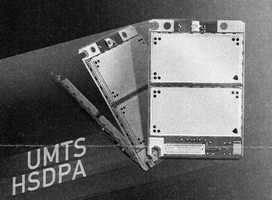HSDPA Module offers data rate of 3.6 Mbps.
Share:
Press Release Summary:

Featuring HSDPA technology, wireless Model HC15 is controlled via AT commands, speeding development of high-speed data applications such as gateways, USB modems, or routers. Module operates on 2,100 MHz frequency band making it suitable for applications in Africa, Asia, Europe, and Middle East. To facilitate development of Windows-based applications, RoHS-compliant unit offers Network Device Interface Specification driver and USB 2.0 Full Speed interface.
Original Press Release:
Siemens Brings First HSDPA Module With Data Rate of 3.6 Mbits/s Onto the Market
The HC15 wireless module from Siemens Automation and Drives (A&D) combines HSDPA (High Speed Downlink Packet Access) technology with a robust interface and mounting concept, and is controlled via AT commands. This allows particularly fast and efficient development of high-speed data applications such as gateways, USB modems or routers. This new module belongs to the Siemens product portfolio of Wireless Modules, which was assigned to the A&D Group on October 1, 2006.
HC15 offers a download data rate of 3.6 megabits/second. It operates on the 2100 megahertz frequency band and is therefore suitable for applications in Africa, Asia, Europe and the Middle East. To facilitate the development of Windows-based applications, the module offers an NDIS (Network Device Interface Specification) driver and USB 2.0 Full Speed interface. In addition, Siemens supports it's customers during application development by providing comprehensive services from design-in to approval.
HC15 already complies with approvals in accordance with R&TTE and GCF as well as regional network operator requirements in Africa, Asia, Europe and the Middle East. The module also complies with the EU regulation RoHS (Restriction of Specific Hazardous Substances in Electrical and Electronic Equipment).
HSDPA is a packet-oriented data transfer standard based on the UMTS network with ten times the download rate of UMTS. The network efficiency for the network operator is double that of a GSM-based network. In addition to faster data transfer, applications based on HSDPA technology also enable a latency time that is seven times shorter than that of a GPRS network. HSDPA is thus suitable for new telecommunications services such as live streaming of video and music, interactive games, high-speed data downloads and broadband Internet and e-mail access. There are already 121 HSDPA networks under development in 55 countries in accordance with GSA (Global mobile Supplier Association).




